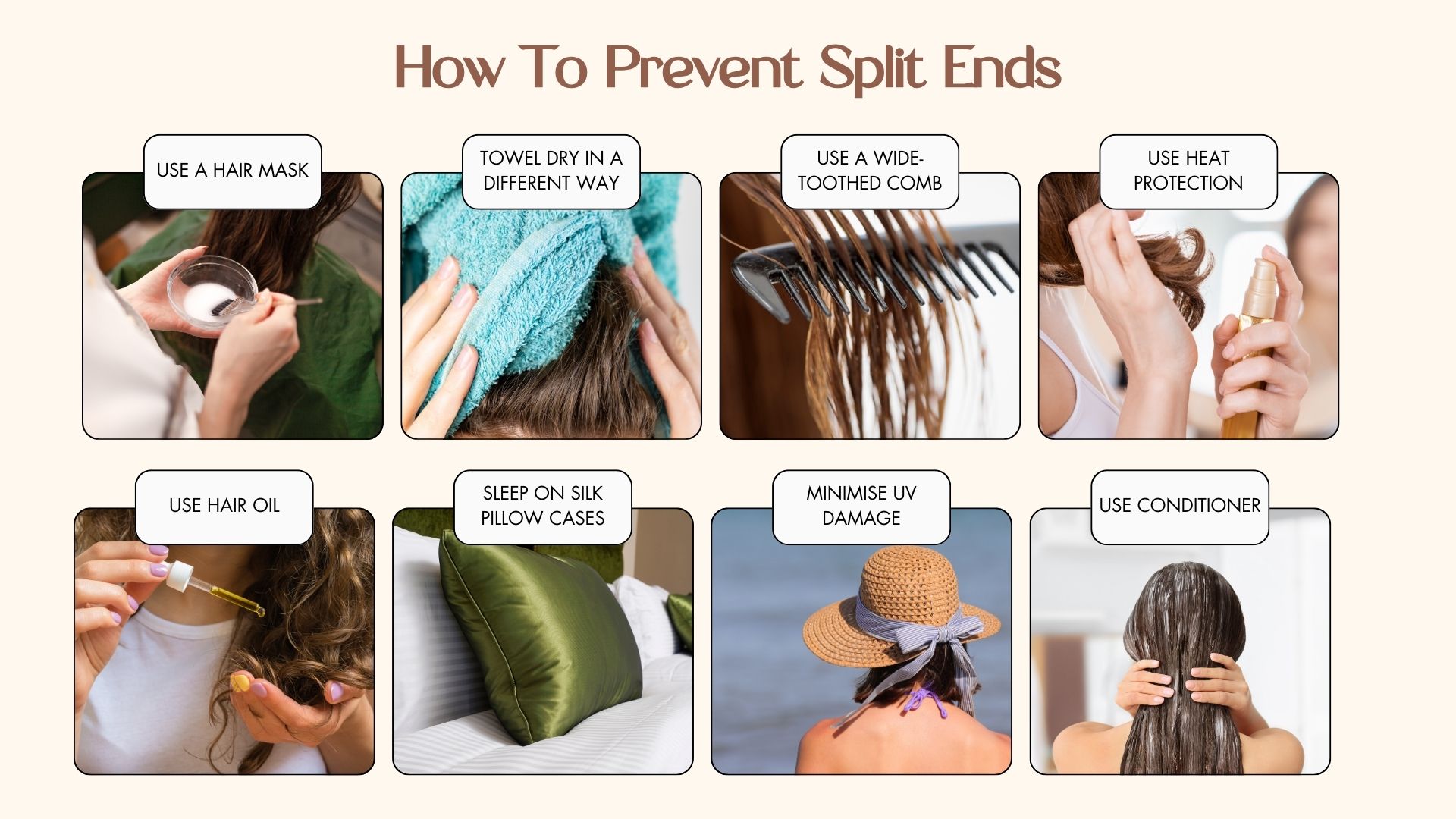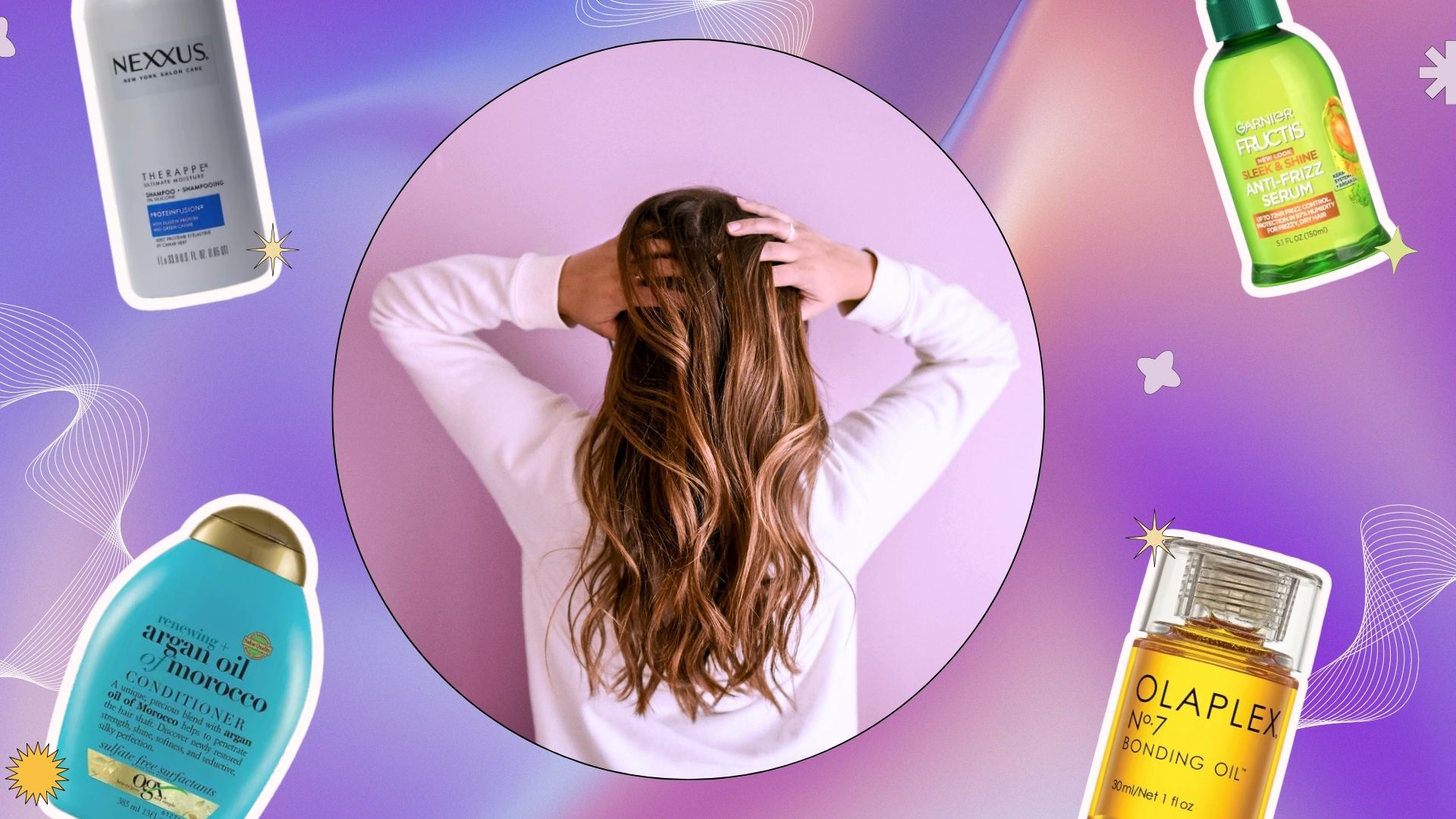Split ends are the bane of anyone aiming for healthy, lush hair. They not only make your hair look frayed and unkempt but can also signal deeper issues like damage and dryness. Tackling split ends is crucial, not just for aesthetic reasons but for the overall health of your hair. It’s a common misconception that split ends can be repaired; in reality, the only true fix is a trim. However, understanding how to prevent split ends can save you from frequent chops and keep your hair growing long and strong.
The journey to prevent split ends begins with a few key changes to your hair care routine. It’s about being gentle with your locks and giving them the TLC they deserve. From dialing down the heat styling to nourishing your strands with the right products, there are several effective strategies to keep split ends at bay. This guide will walk you through essential tips and tricks, shedding light on practices that could be causing harm without you even realizing it.
[in_this_article name=”Regular Trims”]
Regular Trims
One of the most straightforward methods to keep your hair looking healthy and free from frays is to embrace regular trims. It might seem counterintuitive, especially if you’re growing your hair out, but cutting off those damaged tips every 6-8 weeks actually prevents the problem from getting worse. When neglected, those pesky splits can travel up the hair shaft, leading to more significant damage and, ironically, shorter hair in the long run.
A trim doesn’t have to mean a drastic change in length. Even just snipping off a quarter inch is enough to keep your hair in check. This routine maintenance helps to nip the issue in the bud, ensuring that your locks remain strong and resilient. Think of it as a regular health check-up for your hair, a small step that can save you from bigger headaches down the line.

[in_this_article name=”Minimize Heat Styling”]
Minimize Heat Styling
Excessive heat styling is a major culprit behind damaged strands and those unsightly splits at the ends. The intense heat from straighteners, curling irons, and blow dryers strips hair of its natural moisture, making it more prone to breaking and fraying. If sleek, styled hair is your go-to, consider dialing down the frequency and temperature of heat styling tools.
When heat styling is a must, don’t forget to shield your locks with a protective spray or serum designed to minimize damage. These products form a protective barrier over the hair, helping to keep moisture in and excessive heat out. Additionally, explore styling methods that don’t rely on heat, such as braiding damp hair overnight for natural waves.
Use Gentle Hair Care Products
The products you use can significantly impact your hair’s health, especially when it comes to preventing damage and brittleness. Harsh shampoos and styling products containing sulfates and alcohols can strip away natural oils, leaving your hair vulnerable to splitting. Opting for gentle, sulfate-free shampoos and conditioners can make a big difference. These products clean without removing essential moisture that keeps your hair hydrated and resilient.
In addition to choosing the right cleansers, integrating nourishing treatments into your routine can fortify your hair. Look for leave-in conditioners, hair masks, and oils rich in vitamins and natural ingredients like argan or coconut oil. Applying treatments regularly can help maintain moisture balance, improve elasticity, and minimize the occurrence of breakage and frays. Remember, hydrated hair is happy hair, less prone to the wear and tear that leads to those all-too-familiar frayed ends.
[in_this_article name=”Improve Hair Brushing Technique”]
Improve Hair Brushing Technique
How you detangle and brush your hair can also influence its susceptibility to splitting. Vigorous brushing, especially when your hair is wet and at its most vulnerable, can cause breakage and fray the ends. To avoid this, start by gently detangling your hair with a wide-tooth comb, working your way up from the ends to the roots to minimize stress on the hair.
Switching to a brush designed to minimize damage, such as those with natural bristles or flexible, wide-spaced plastic bristles, can also help protect your hair. These brushes help distribute your hair’s natural oils from root to tip, enhancing its overall health and reducing the likelihood of breakage. It’s worth mentioning that being gentle doesn’t just apply to the tool but also to the technique. Avoid pulling or tugging at knots, and instead, patiently work through them to keep your hair smooth and free from damage.

[in_this_article name=”Hydrate And Nourish”]
Hydrate and Nourish Hair
Keeping your hair well-moisturized is crucial in the battle against split ends. Dry, brittle strands are more prone to breaking and fraying, so hydration is key. Incorporate deep conditioning treatments into your hair care routine to replenish moisture and strengthen your hair. These treatments, when used weekly, can significantly improve hair texture and resilience, making it less likely to suffer from damage.
Natural oils can also play a vital role in maintaining hair health. Products containing argan, jojoba, or coconut oil can be excellent for sealing in moisture and adding an extra layer of protection against environmental stressors. Apply these oils to the ends of your hair, where moisture is most needed and where splits are likely to occur. This not only helps in preventing new splits but can also improve the appearance of your hair, giving it a healthy, vibrant sheen.
[in_this_article name=”A Healthy Diet”]
Healthy Diet for Healthy Hair
A nutritious diet plays a pivotal role in maintaining healthy hair and preventing split ends. Hair health is directly influenced by the nutrients we consume, with certain vitamins and minerals being critical for strong, resilient hair. Incorporating foods rich in vitamins A, C, E, and minerals like zinc and iron can significantly contribute to hair strength and vitality. Foods such as leafy greens, nuts, seeds, avocados, and fatty fish are excellent sources of these nutrients.
Moreover, ensuring adequate protein intake is essential, as hair is primarily made of keratin, a type of protein. Lean meats, legumes, and dairy products can provide the necessary protein to support hair growth and repair. Staying hydrated by drinking plenty of water is also crucial for keeping your hair and scalp hydrated, further helping to prevent split ends. A balanced diet not only benefits your overall health but also provides your hair with the foundation it needs to stay strong, reducing the likelihood of damage and breakage.
FAQ
What causes split ends?
Split ends are primarily caused by damage to the hair’s outermost layer, leading to fraying or splitting of the hair shaft. This damage can result from various factors, including mechanical stress from brushing or styling, heat damage from tools like straighteners and blow dryers, chemical treatments such as coloring and perming, and environmental factors like sun exposure and dry weather.
Is it possible to mend split ends without cutting them?
While cutting is the only permanent solution for removing split ends, some products can temporarily mend or disguise them. Serums and leave-in conditioners that contain silicones or natural oils can coat the hair, making ends appear smoother and less frayed. These treatments can provide a temporary fix by binding the split ends together, improving the overall appearance of the hair until the next trim.
Are there any effective treatments for split ends?
While the only definitive way to rid your hair of split ends is to trim them, certain treatments can temporarily improve hair appearance and prevent further damage. Deep conditioning treatments, leave-in conditioners, and hair oils can help moisturize and strengthen hair, reducing the likelihood of new split ends forming. Look for products with ingredients like keratin, which can help repair and protect the hair shaft.
Published by Malcolm Trapp








